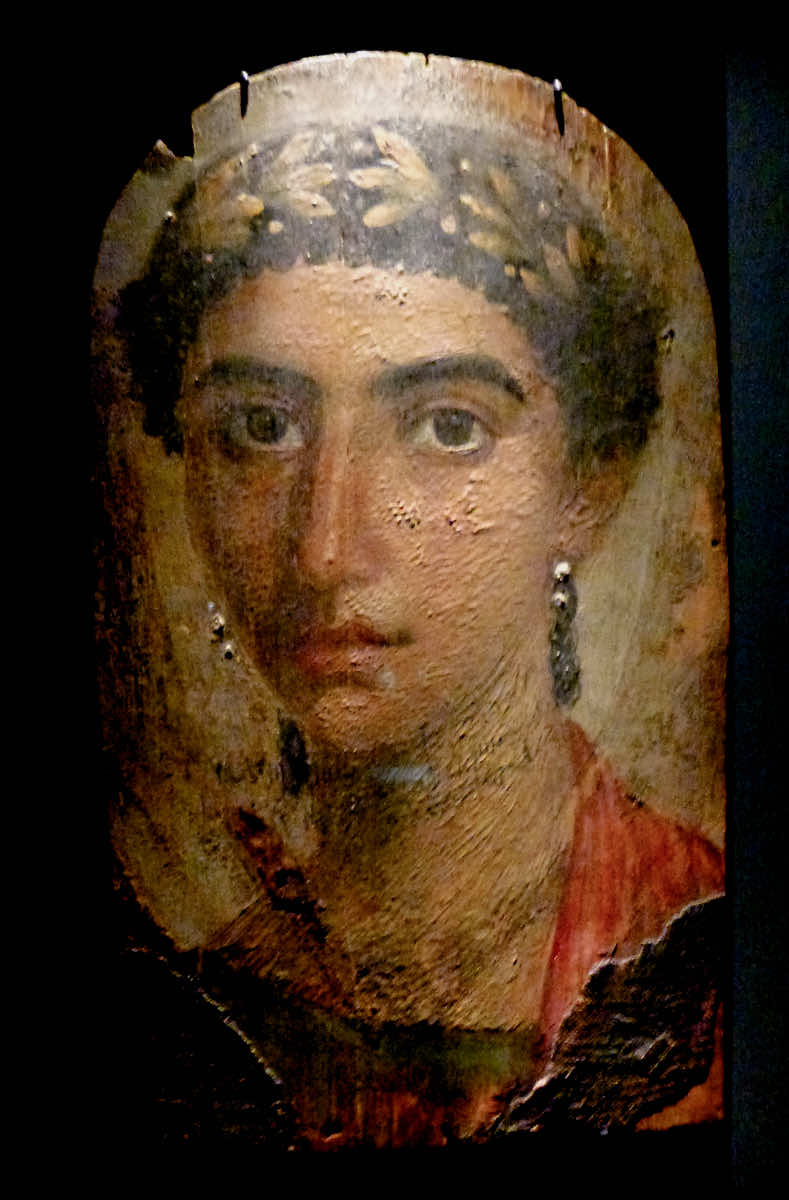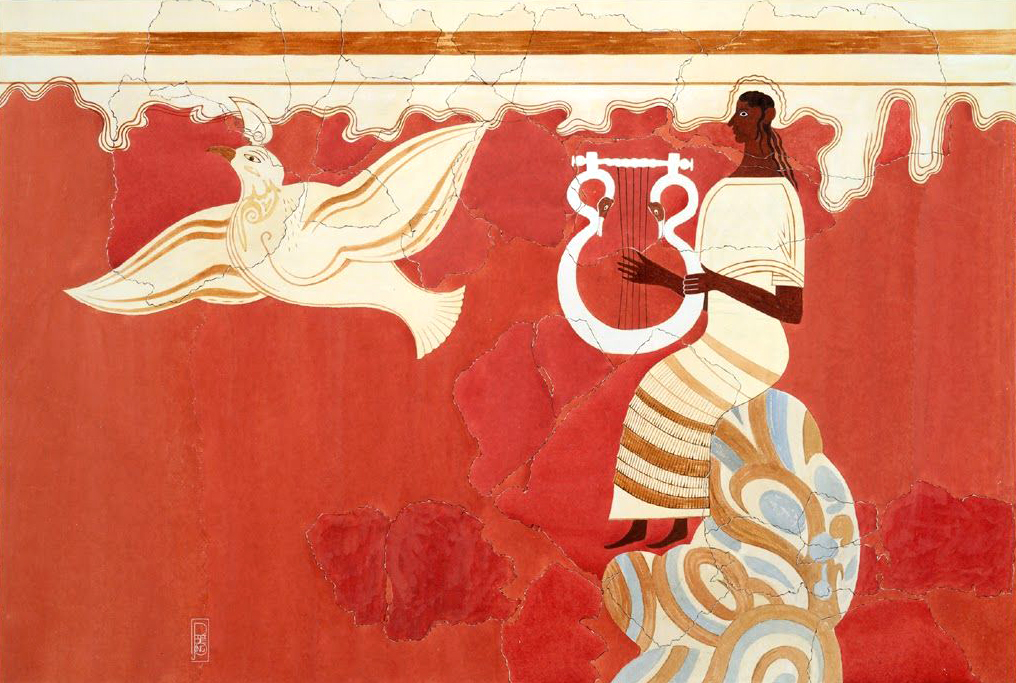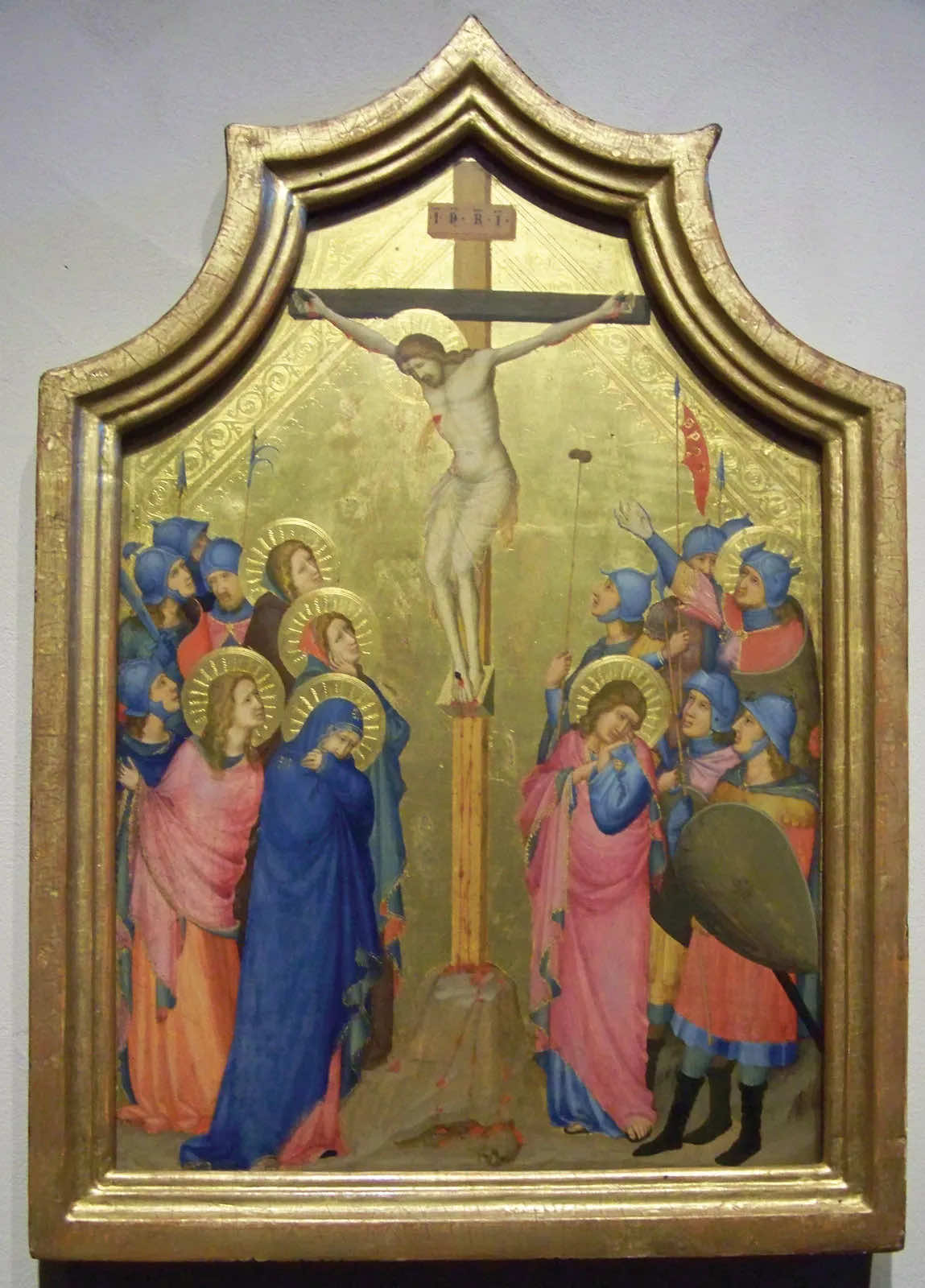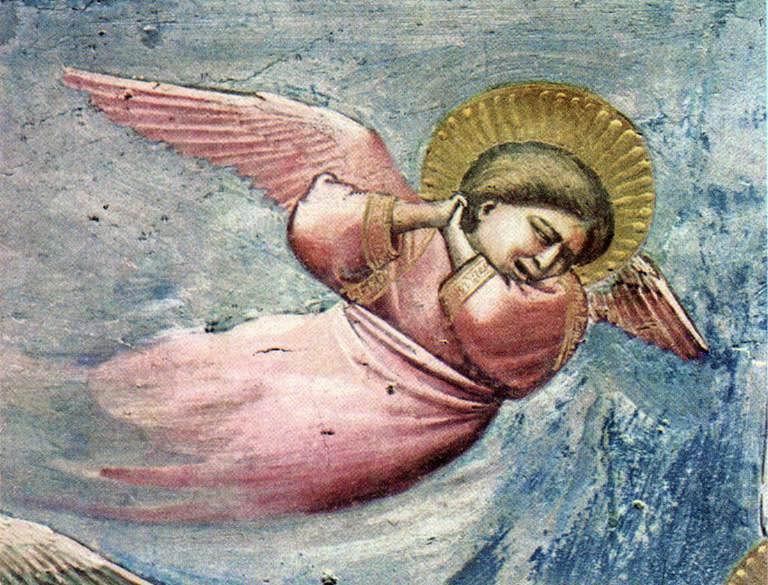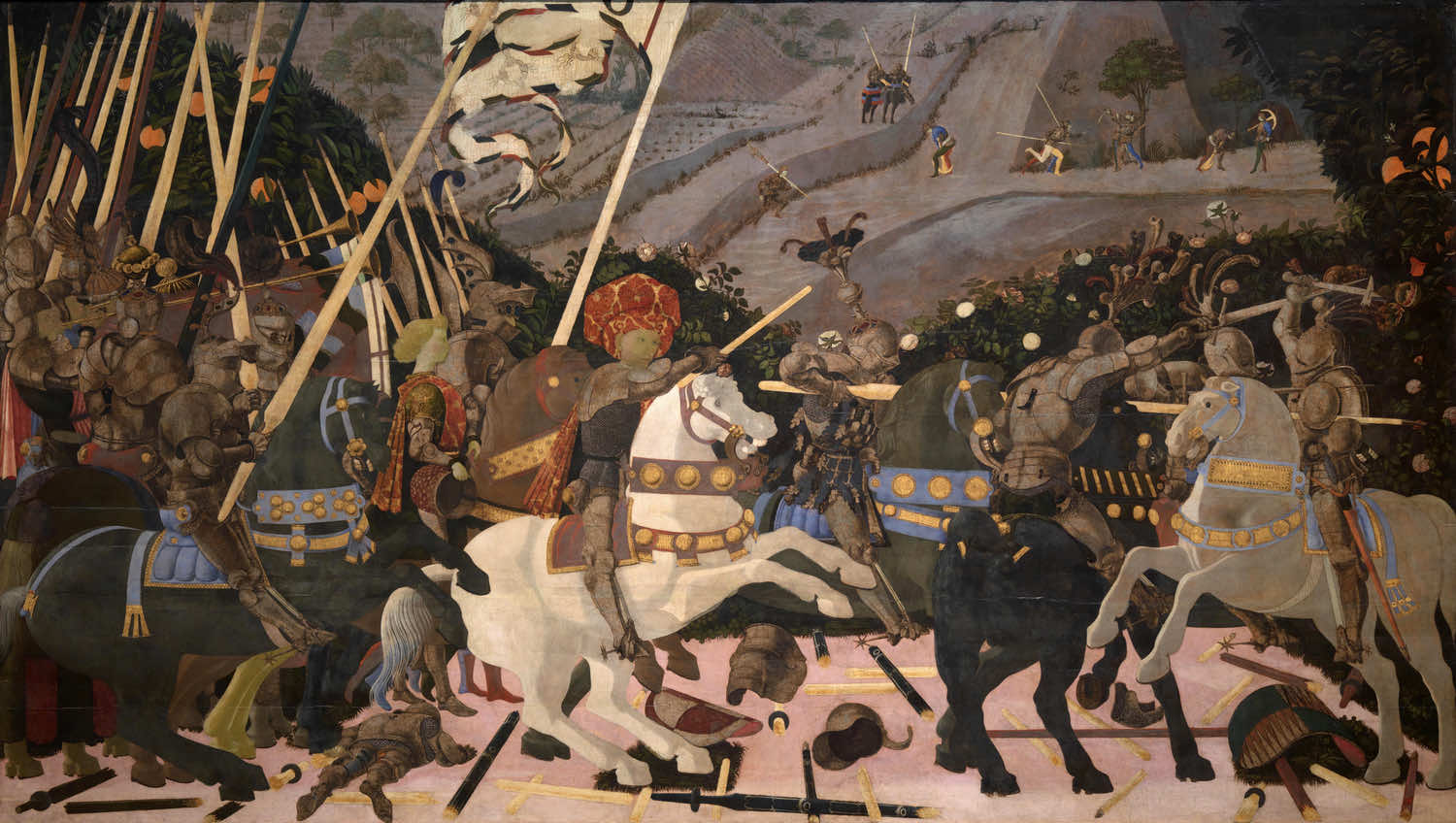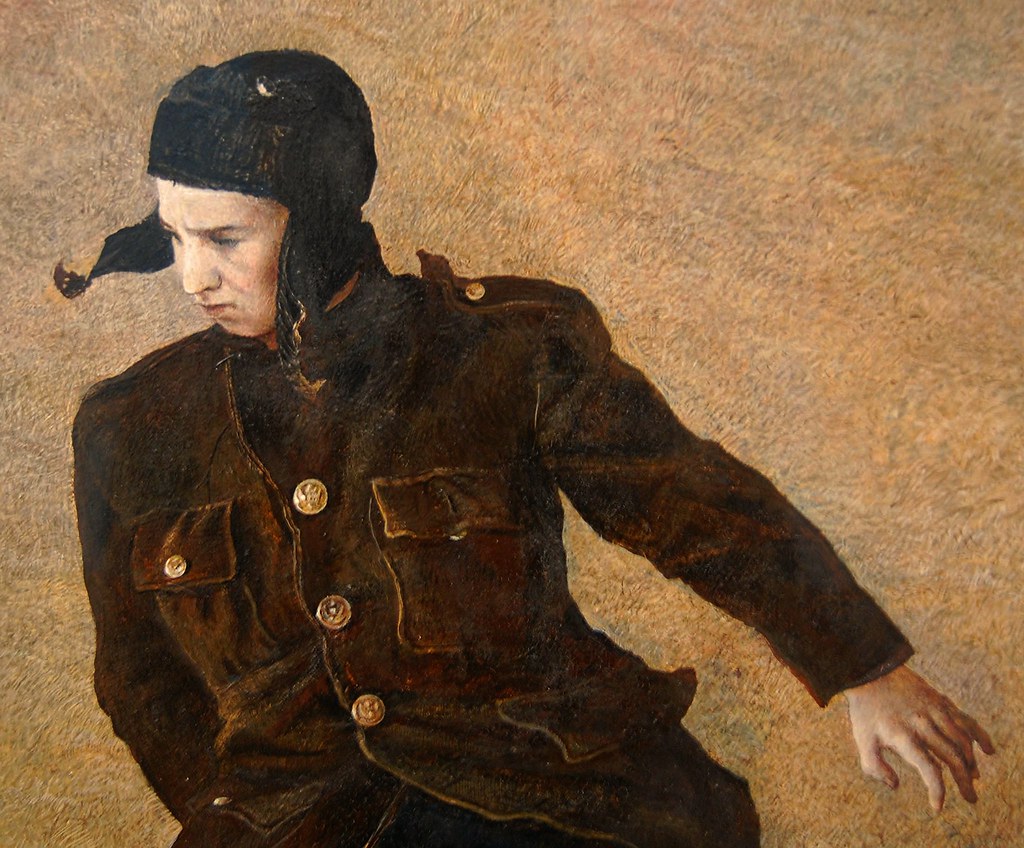Egg Tempera
A Brief History
and General Information on the Use of Egg Tempera
Egg Tempera History
Egg tempera is a painting medium that has been used for centuries, dating back to ancient Greece. It involves mixing dry pigments with egg yolk, water, and sometimes other ingredients, to create a paint that dries quickly and has a distinct luminosity and depth. While it was widely used in medieval and Renaissance art, it fell out of favour with the advent of oil painting. However, in recent years, egg tempera has experienced a resurgence in popularity among contemporary artists.
Scott has had a long term admiration for the ancient portraits of Fayum (Egypt) created in 1st and 3rd centuries CE. It may or may not be coincidental that they were created in egg tempera, in fact, it may or may not even be true that they were created using egg tempera at all. During the early period of the Roman Empire, artists working in Egypt painted in encaustic and tempera to create the Fayum portraits that would accompany their mummies into the next world. Astonishingly lifelike and realistic, the portraits were attached to the mummies as part of the burial process. It was the use of egg tempera or rather, something like it, 3 that allowed for the precise and detailed brushwork, which contributed to their realism and conveyed and almost otherworldly luminescence. The durability of this medium allowed these portraits to resonate with the future in a way that few other mediums can. Whether or not they were truly created with egg tempera, Scott’s engagement with those paintings marks a life long fascination with the medium of egg tempera.
Egg tempera was used extensively in ancient Greece, where it was employed to create intricate panel paintings. In Mycenaean times egg tempera was employed in creating the mural paintings of the Palace of Nestor in Pylos, dating to 1200 BC. where egg was detected in mural fragments rather than fresco.4
Mummy portrait of Eirene, Roman, c. 40/50 AD
origin unknown, encaustic on lime wood, height 37, maximum width 16 cm, thickness 0.1 cm. Landesmuseum Württemberg, inventory number 7.2, Sieglin Collection in the Antikensammlung, not exhibited.
https://commons.wikimedia.org/wiki/ File:Fayum_mummy_portrait_of_Eirene.jpg
Lyre Player and Bird Fresco from the Throne Room of Nestor’s palace in Pylos
dated LH IIIB (about 1300 BC). Watercolor reconstruction by Piet de Jong. Archaeological Museum of Chora, Messinia, Greece. Date circa 1300 B.C. Author: Leporello78 link>
The Crucifixion
tempera and gold leaf on wood panel by the Master of the Codex of Saint George, c. 1340–45; in the Metropolitan Museum of Art, New York City.
Photograph by KaDeWeGirl. The Metropolitan Museum of Art, New York City, The Cloisters Collection, 1961 (61.200.1)Creative Commons Legal Code
During the Middle Ages, egg tempera became the preferred medium for painting religious icons and illuminated manuscripts. This was due in part to its ability to create rich, vibrant colours that could withstand the test of time. During the Byzantine period (4th-15th century), egg tempera was the primary medium for religious icons and other decorative art forms. Byzantine artists used egg tempera to create highly stylized, symbolic images that were characterized by bold, flat colours and intricate patterns.
In the Gothic era (12th-16th century), egg tempera continued to be used extensively in religious painting, but artists also began to experiment with new techniques and styles. Gothic artists used egg tempera to create highly detailed, naturalistic images that were characterized by a greater sense of depth and realism than earlier Byzantine works. During the Renaissance (14th-17th century), egg tempera began to be replaced by oil paint as the preferred medium for many artists though it continued to be widely used, particularly in Italy. It was favoured by artists such as Sandro Botticelli, Piero della Francesca, and Fra Angelico, who valued its luminosity and its ability to create fine details. Some of the most famous examples of egg tempera painting include the 14th-century Italian painter Giotto di Bondone’s frescoes in the Scrovegni Chapel in Padua, Italy.
The development of oil painting in the 15th century eventually led to the decline in use of egg tempera. Oil paint allowed artists to work more slowly and deliberately than egg tempera, which dries quickly and can be difficult to rework once it has dried. This gave artists more flexibility to create complex, detailed compositions with multiple layers of paint. Oil paint’s slow-drying nature allowed for blending and layering of colours, which could create a more subtle and nuanced range of tones and hues. Nonetheless, some recent studies suggests that even after shifting to oil paint, many artists continued to mix their oil paints with tempera. While some may have done this to slow drying times or to create more durable surfaces, close examination shows that egg tempera was favoured for specific passages in some paintings, particularly in lighter areas of the paintings and in areas with slightly raised patterns where transparency, luminosity, and texture were particularly valued. 6 Artists’ love of experimentation is clearly not limited to our contemporary framework..
Interestingly, and as a note of caution for those venturing into their own experiments with egg tempera, recent research has shown that some experimentation with egg tempera can lead to issues with durability. Through the facility of Google’s googlepixel “art camera”, it has been discovered that in 1498 when Leonardo da Vinci painted The Last Supper he chose to experiment, using egg tempera on plaster. His choice of plaster (along with the painting’s having spent a prolonged period in a Dominican Monastery’s stable) resulted in the painting quickly fading. Luckily both Da Vinci himself and his students, created copies using oils which were used as references to restore the original work.7
Niccolò Mauruzi da Tolentino at the Battle of San Romano (probably c. 1438–1440)
egg tempera with walnut oil and linseed oil on poplar, 182 × 320 cm, National Gallery, London.
Despite its decline, egg tempera continued to be used by a small group of artists, particularly in the Orthodox Christian tradition, where it remained the preferred medium for icon painting. It wasn’t until the 20th century that egg tempera began to see a resurgence in popularity among Western artists.
In the 20th century, egg tempera experienced a revival as artists began to explore new techniques and applications for the medium. Contemporary artists continue to use egg tempera in a variety of ways, from traditional religious painting to abstract and experimental works. Many artists appreciate the unique qualities of egg tempera, such as its luminosity, durability, and ability to create highly detailed and precise images.
One of the key figures in the revival of egg tempera was American artist Andrew Wyeth, who used the medium extensively in his paintings of rural landscapes and portraits. Wyeth embraced egg tempera when he came to feel that watercolour was “too facile.”8 His use of egg tempera helped to bring the medium back into the public eye, and many contemporary artists have since experimented with the medium, creating works that range from traditional to experimental.
Traditional use of Egg Tempera
On a basic level, egg tempera is a painting medium that involves mixing dry pigments with egg yolk, water, and sometimes other ingredients to create a paint that can be applied to a variety of surfaces, such as wood, panel, or paper.
To make egg tempera paint, the artist first separates the egg yolk from the egg white, and then mixes the yolk with a small amount of water (distilled water is preferable to limit the possibility of bacterial contamination 10). The dry pigments are then added to the mixture, and the paint is stirred until it has a smooth, consistent texture. Depending on the artist’s preference, other ingredients such as vinegar (a few drops can keep the mixture fresh longer) or honey (to slow the drying process) may be added to the mixture to modify the paint’s properties.
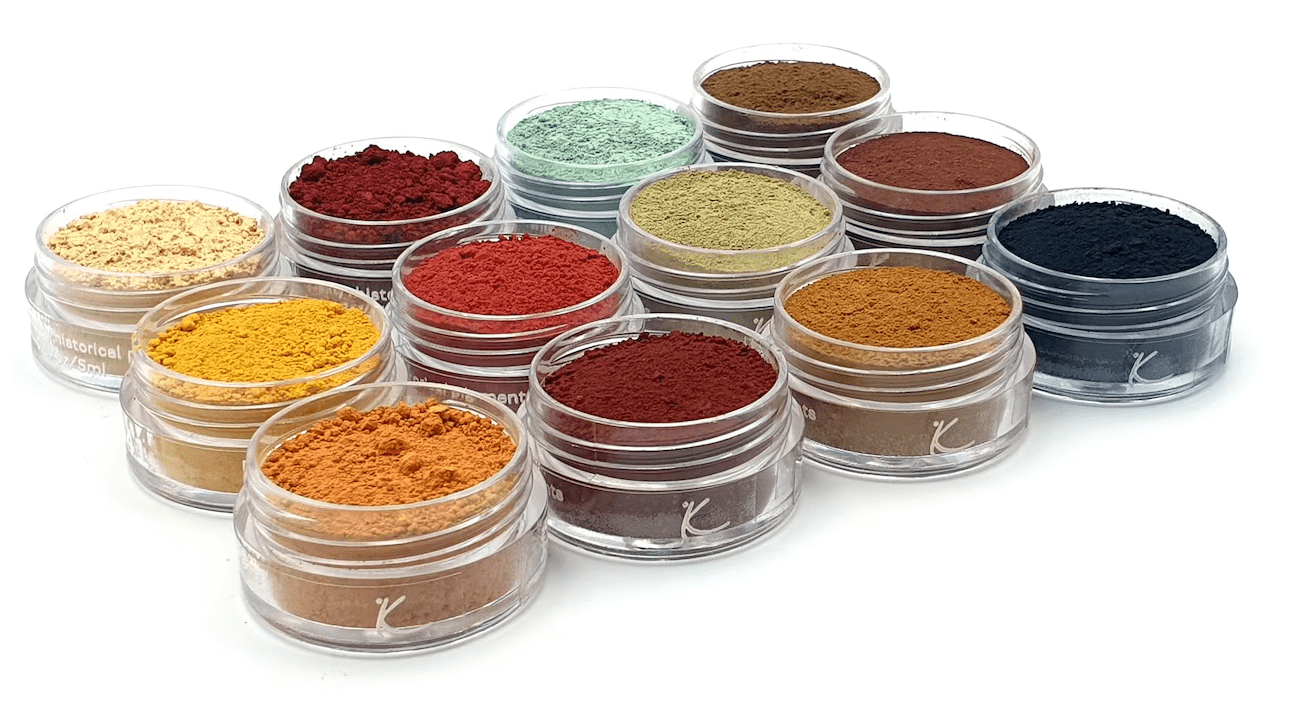
Once the paint is prepared, it can be applied to the chosen surface using a brush or other painting tool. Because egg tempera dries quickly, the artist typically works in small sections, building up the painting layer by layer. Egg tempera paint can be layered and blended to create a wide range of effects, from fine, detailed lines to broad, bold strokes.
There are many recipes for egg tempera.
Durable paint requires a proper relationship between pigment and binder, known as CPVC (critical pigment volume concentrate). …there’s also an excellent article by Sarah Sands at https://www.justpaint.org/pigment-volume-concentration-and-its-role-in-color/. CPVC varies depending on the paint. Once it’s achieved, there isn’t a benefit to adding more binder to paint; in fact, excess binder is generally a problem. It can cause cracking, yellowing (in oil paint), and efflorescence onto the surface of excess lipids (fatty acid migration).
For egg tempera, the ratio of pigment to binder (pure yolk) is approximately 1:1 (with very minor variations among a few “fatter” or “leaner” pigments). Once you’ve tempered (mixed yolk and pigment) properly, there’s generally no need to periodically add additional layers of pure binder.
Durability of Egg Tempera
Egg tempera can be a durable painting medium if it is properly prepared and cared for. Because the paint is mixed with egg yolk and water, it does not contain the oils found in other painting mediums, which can make it more prone to cracking or flaking. However, proper preparation and application techniques can help to minimize these risks.
One of the most important steps in ensuring the durability of an egg tempera painting is to properly prepare the surface on which the paint will be applied. The surface should be clean, smooth, and properly sealed to prevent moisture from penetrating the paint layers. Additionally, the artist should use a quality, archival-grade panel or support to prevent warping or other structural issues.
Another important factor in the durability of an egg tempera painting is the quality of the pigments used. Low-quality or unstable pigments can fade or change colour over time, compromising the integrity of the painting. High-quality, lightfast pigments should be used to ensure that the painting will retain its vibrancy and colour over time.
Finally, proper care and maintenance are essential to the longevity of an egg tempera painting. The painting should be stored in a cool, dry place away from direct sunlight, and should be protected from moisture, dust, and other environmental factors. Regular cleaning and maintenance can also help to prevent damage or deterioration of the painting over time.
Overall, while egg tempera may require more care and attention than other painting mediums, it can be a durable and long-lasting choice for artists who are willing to take the necessary steps to ensure its preservation.
A basic recipe that is widely used is as follows:
Ingredients:
Egg yolks
Water
Pigment
Instructions:
1. Start by separating the egg yolks from the whites. Only the yolks are used in egg tempera painting. One of the easiest ways to separate egg yolk from egg white is to use an egg separator. These are inexpensive tools that allow you to crack an egg into a bowl, and then use the separator to remove the yolk from the white. Another method is to crack the egg into a funnel and let the white drain out into a bowl while holding onto the yolk. You can also use the shell halves to transfer the yolk back and forth between them, allowing the white to drip into a bowl below. Lastly, you can crack the egg into your hand and let the white slip through your fingers while holding onto the yolk. From personal experience I find this last method most effective. You can gently pass the egg between your hands until all of the white is removed, hold the egg yolk with a gentle pinch-hold above the jar you are mixing your paint in and puncture the yolk sack at the bottom, dropping the yolk into the jar and discarding the yolk sack (some artists recommend adding one drop of oil of spike lavender to the yolk along with water).
2. Mix the egg yolks with a small amount of water, using a ratio of approximately one part water to one part egg yolk. The mixture should be thoroughly blended to create a smooth, creamy consistency.
3. Add pigment to the egg yolk mixture, using a small amount at a time until the desired colour is achieved. Be sure to mix the pigment thoroughly with the egg yolk mixture to ensure that it is evenly distributed.
4. Adjust the consistency of the paint by adding more water if it is too thick or more pigment if it is too thin.
5. Once the paint is mixed, it should be used immediately. Egg tempera dries quickly, so it is important to mix only as much paint as you will need for your painting session.
This basic recipe can be modified depending on the preferences of the artist. Some artists prefer to add a small amount of vinegar or lemon juice to the mixture to help preserve the paint, while others prefer to add a small amount of alcohol to help the paint dry more quickly. The amount of pigment used can also be adjusted depending on the desired opacity and intensity of the paint.
Many other additives have been used in egg tempera recipes. Mixing ones own paint invite experimentation, a process that has gone on for a very long time and will surely continue with each artist who finds themselves mixing their own paint.
The Donna Nuda study was the first that aimed to analyze the ingredients used for paint in Leonardo’s studio in such detail. It was a success: Through the varnish, the EVA films coaxed traces of linseed oil, conifer resin, rosemary oil and egg yolk (evidence of the egg-based painting medium tempera grassa). One expert described the findings as “the artistic equivalent of discovering the recipe for Coca-Cola.” The researchers suggested that rosemary oil, which Leonardo hadn’t been known to use, likely diluted the paint and delayed drying time, helping the artist blur features such as landscapes when he wanted to create a sense of depth.14
The proportion of egg to water in egg tempera can vary depending on the recipe and the preferences of the artist. However, a commonly used ratio is one part egg yolk to one part water. This creates a mixture that is thick enough to hold the pigment but still fluid enough to be applied with a brush. The egg yolk acts as a binder, holding the pigment in place and allowing it to dry to a hard, durable finish. The addition of water helps to thin the mixture and create a workable consistency for painting. It is important to note that egg tempera dries quickly, so it is important to mix only as much paint as you will need for your painting session.
The preferred type of egg for egg tempera is typically a fresh, organic egg. The egg yolk is the part of the egg that is used in egg tempera, and it should be separated carefully from the white to avoid any contamination or impurities. Organic eggs are preferred because they are less likely to contain antibiotics or other chemicals that could affect the quality of the paint. Additionally, it is important to use fresh eggs, as older eggs can become watery and may not provide the necessary binding properties for the paint. Some artists prefer to use eggs from specific types of birds, such as quail or ostrich, but this is a matter of personal preference and does not significantly affect the quality of the paint.
Egg tempera painting surfaces
In ancient times, the preferred surface for the use of egg tempera was wood panels. This was particularly true in the Middle Ages and Renaissance, when the use of egg tempera was at its height. Wood panels were popular for several reasons: they were readily available, inexpensive, and provided a smooth and stable surface for the paint. Additionally, wood panels were able to withstand the rigours of transportation and were less prone to cracking or warping compared to other surfaces such as canvas or parchment.
In contemporary times, artists use a variety of surfaces for egg tempera painting, depending on their preference and the intended outcome of the artwork. Some common surfaces include gessoed panels, paper, and canvas. Gessoed panels are a popular choice because they provide a smooth and stable surface for the delicate layers of egg tempera. However, some artists also choose to work on unprimed surfaces, allowing the texture and colour of the underlying material to influence the final result. Ultimately, the choice of surface depends on the artist’s preference, the desired effect, and the intended longevity of the artwork.
The advantages of egg tempera
Eggs are inexpensive and non-toxic which makes painting with tempera an attractive alternative for painters who are concerned with making ethical choices in regards to health and ecology.
One of the unique properties of egg tempera is its luminosity. Because the pigments are mixed with egg yolk, which contains a high concentration of proteins and fats, the resulting paint has a distinct depth and glow that is hard to achieve with other painting mediums. Applied in thin layers it can produce results similar to those of watercolours. These qualities were in part, what attracted Scott to egg tempera. Over many years, as she transitioned into the landscape genre, her process included extensive experimentation with TerraSkin, a stone-based eco-paper somewhat similar to mylar. This ecologically ethical paper posed many challenges but led to a unique practice of working with oils in a way that was somewhat similar to working with watercolours, with the white surface of the paper showing through in her paintings in a manner reminiscent of the watercolour landscape traditions of Asian art. On returning to canvas she discovered ways to maintain the white ground through the use of cut-outs and resist, drawing the light of her oil paintings’ grounds to illuminate the surface of her paintings.
Egg tempera is also very versatile, and can be used to create a wide range of effects, from fine, delicate details to bold, gestural strokes. Beyond its effectiveness as a medium, egg tempera’s historical associations add resonance to the process of creation connect the painter to tradition and the exploration of the history of painting. At the same time it provides a way to push the boundaries of what is possible with the medium.
According to a recent study published in the journal “Nature Communications,”9 there are several reasons for the addition of egg as a “temper.” A group of experts examined the use of egg tempera by the old masters. They created three types of paint: the first was made from pigment ground with linseed oil, the second used the same mixture but with the addition of a few drops of egg yolk, and the third was created by mixing a pigment with a solution of diluted egg yolk – after drying this was ground and dispersed with oil.
Egg Tempera Techniques
Overall, the techniques used in egg tempera painting are similar to those used in other painting mediums, but the unique properties of egg tempera require a certain level of precision and care to achieve the desired effects.
Common techniques used for using egg tempera include:
Scumbling: This technique involves applying thin, translucent layers of paint to create a smooth, even surface. The paint is mixed with water and egg yolk to create a thin, fluid consistency that can be applied with a soft brush. The layers are built up gradually, allowing each one to dry completely before applying the next.
Glazing: Glazing involves applying multiple layers of paint to create a luminous, translucent effect. Each layer is allowed to dry completely before the next is applied, creating a subtle depth and richness of colour. This technique is particularly effective for creating the appearance of light and atmosphere in landscapes and other subjects.
Drybrushing: Drybrushing involves applying paint with a dry brush, using a light touch to create subtle textures and highlights. This technique can be used to create the appearance of fur, hair, or other delicate textures.
Stippling: Stippling involves applying paint with a stippling brush, creating a pattern of tiny dots that can create a range of effects from soft shading to fine detail work. This technique is particularly effective for creating the appearance of skin or other delicate textures.
Egg tempera painting surfaces
In ancient times, the preferred surface for the use of egg tempera was wood panels. This was particularly true in the Middle Ages and Renaissance, when the use of egg tempera was at its height. Wood panels were popular for several reasons: they were readily available, inexpensive, and provided a smooth and stable surface for the paint. Additionally, wood panels were able to withstand the rigours of transportation and were less prone to cracking or warping compared to other surfaces such as canvas or parchment.
In contemporary times, artists use a variety of surfaces for egg tempera painting, depending on their preference and the intended outcome of the artwork. Some common surfaces include gessoed panels, paper, and canvas. Gessoed panels are a popular choice because they provide a smooth and stable surface for the delicate layers of egg tempera. However, some artists also choose to work on unprimed surfaces, allowing the texture and colour of the underlying material to influence the final result. Ultimately, the choice of surface depends on the artist’s preference, the desired effect, and the intended longevity of the artwork.

